#houses tuscany
Explore tagged Tumblr posts
Text
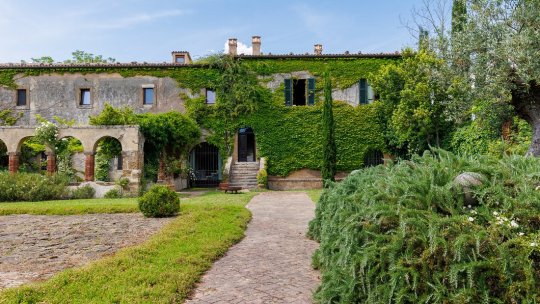
OMG, the coolest, awesome, magnificent, probably haunted, home converted from a 1522 convent in Pitigliano, Italy, in Tuscany, has the witchiest fireplace just in time for Halloween. 10bds, 8ba, $5,177,453.
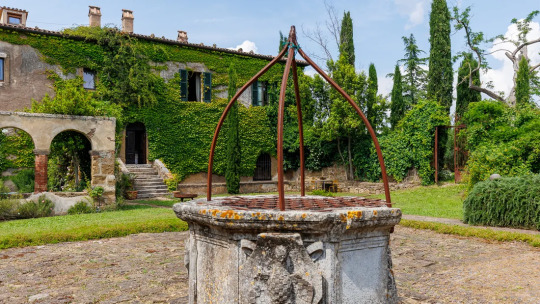
How many skeletons are down in this rusty old well?
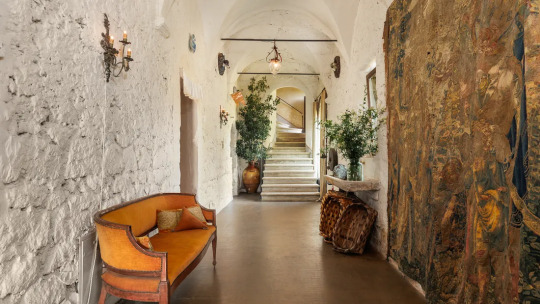
The entrance hall. Look at the ancient walls, now whitewashed.


Is this not the consummate witches fireplace? The living room is gorgeous with its tile floor and curved wall.
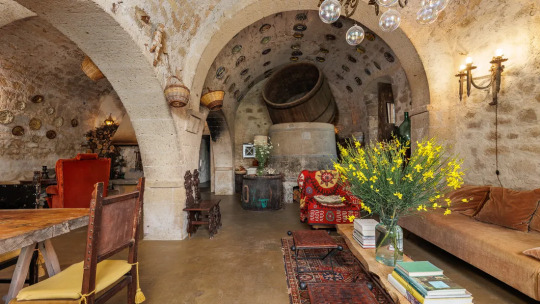

Amazing. The kitchen looks like ancient catacombs. Look at the old vats that they must've stomped on grapes in and the old wine barrels on display. How cool is that? The nuns must've had purple feet for sure.
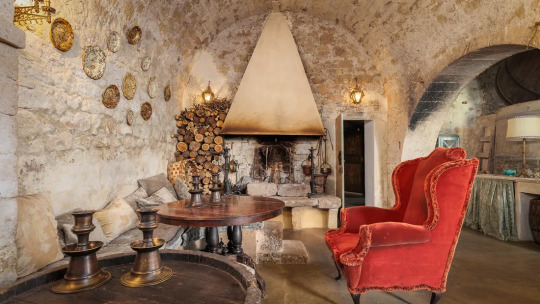
A cozy sitting area with fireplace outside the kitchen. This home is gorgeous - the ancient walls!

This looks like a pantry.

Lovely reading room. Look at the niche in the wall. You can't see much of the ceiling, but it looks brick and vaulted.
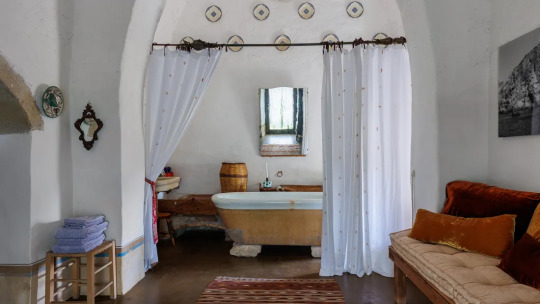
Great bath with the antique tub resting on stones.
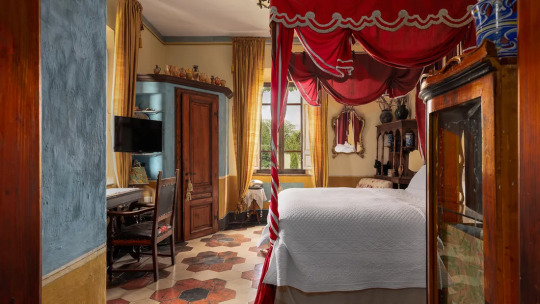
Elegant bedroom. Look at the flower pattern in the floor tile and the way they made the closet in the corner.

This large bedroom has a heat hearth.
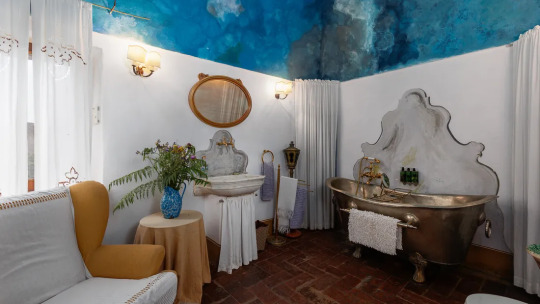
This bath looks like an elegant French style.
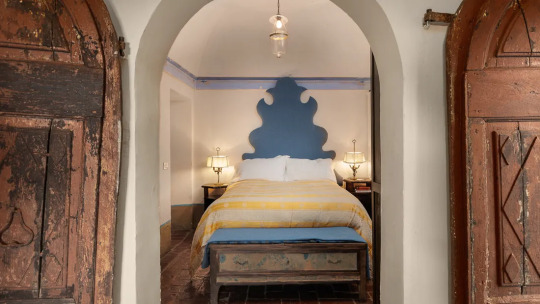
Beautiful smaller bedroom. Notice the ancient doors.
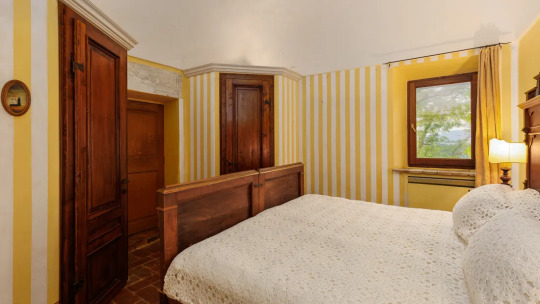
Cheery yellow-striped bedroom.


This long hallway has a brick heat stove.

Like a fairy tale.


The lush green grounds are stunning.
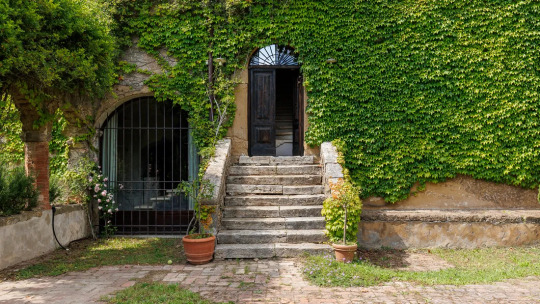
I wonder what behind the gate. Maybe a chapel or wine cellar?
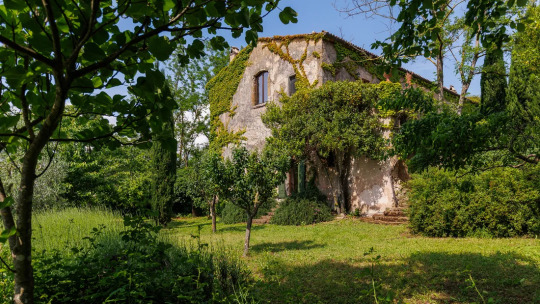
This place is so dreamy.

Ancient walls. This area looks like the perfect spot for a garden.

But, that's not all. Look at this beautiful pool.
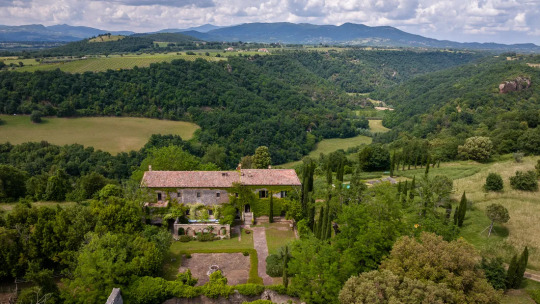
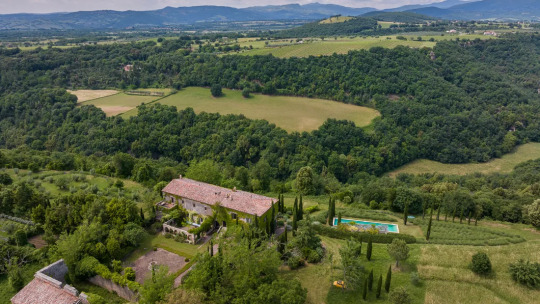
Stunning property on a 26 acre lot.
189 notes
·
View notes
Text
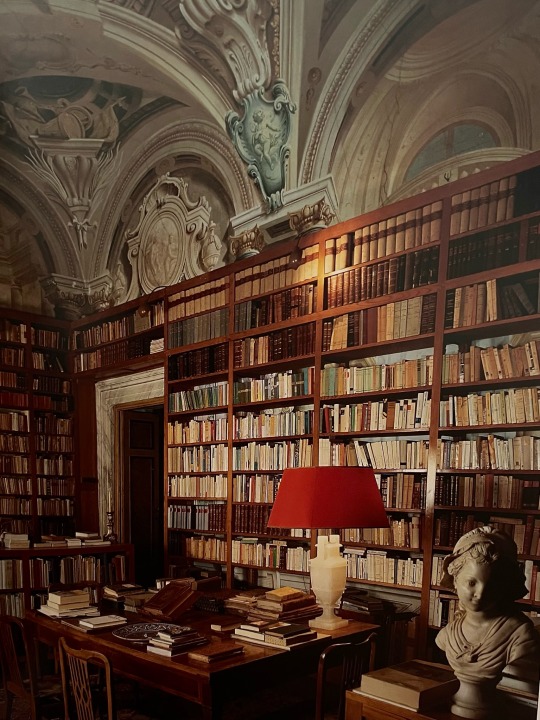
#country house#interior#architecture#library#preppy#higginsandcole#Italy#Italian#Tuscany#books#baroque
2K notes
·
View notes
Text

Bellissima casa e giardino - TOSCANA
#bellissima#casa#giardino#beautiful#house#garden#hermoso#jardin#toscana#tuscany#italia#italy#europe#europa
102 notes
·
View notes
Text

101 notes
·
View notes
Text
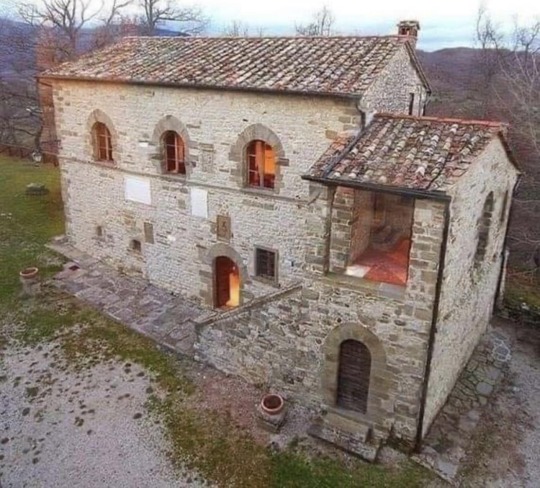
Caprese Michelangelo - Arezzo - Tuscany - Italy
The house where Michelangelo was born in Italy, 1475
270 notes
·
View notes
Text






2000s tuscan home. 🪵
#2000s#nostalgia#nostalgic#tuscany#tuscan house#backyard#bedroom#brown#living room#family#kitchen#bathroom#foyer#home#home decor#house#tumblr#aesthetic#girl blogger#blogging#2024#blogger
44 notes
·
View notes
Text
To his wife Clarice at Florence Milan, 22 July 1469

I have arrived here safely and am well. I am sure this will please you more than any other news save that of my return, judging by my own feelings of longing for you and for home. Make much of Piero, Mona Contessina, and Mona Lucrezia. I shall hasten to finish here and return to you, for it seems to me a thousand years since I saw you. Pray to God for me, and if you want anything from here let me know, so long as I have not already left. -From Milan, July 22, 1469
Source: Lorenzo de' Medici, Selected Poems and Prose
#de' medici#giuliano de medici#cosimo medici#italia#lorenzo medici#lorenzo de medici#clarice orsini#medici the magnificent#Lorenzo de'Medici :selected poems and prose#renaissance#florence italy#tuscany#milan#house of medici
25 notes
·
View notes
Text
#bookdj#bookitaliandj#comingback#celinedion#weddingparty#wedding party italy#wedding dj italy#wedding dj in italy#best wedding dj italy#best wedding dj#best wedding dj in italy#celine dion#house music party#dj para bodas#italian dj#best italian wedding dj#best dj for wedding italy#wedding dj rome italy#wedding dj tuscany#best wedding dj tuscany#top 10 wedding dj italy#topdj italy#dj gianpiero fatica#wedding dj gianpiero fatica#wedding dj italy gianpiero fatica#dj set gianpiero fatica#wedding music italy#music wedding italy#dj matrimonio roma#dj per matrimonio roma
13 notes
·
View notes
Photo
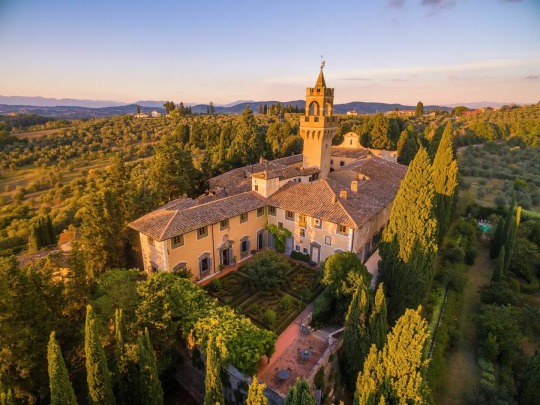
Castello di Montegufoni, Montespertoli,Tuscany, FI, Italy
#art#design#architecture#castello#castle#chateau#castello di montegufoni#tuscany#italy#montespertoli#luxury house#history#luxury home#luxurylifestyle#style
324 notes
·
View notes
Text

53 notes
·
View notes
Text


Hyper-fancy Tuscany-inspired home 2005 mansion in Mesa, AZ comes with its own grotto. 6bds, 7ba, 10,418 sq ft, $4.1m.

I said it was hyper-fancy. Look at all the columns on stone plinths. The ceilings are also architecturally interesting.

The large open kitchen- look at the beams.

It's unusual to see green quartz counters.

A table with a round stucco banquette separates the kitchen from the family room.

And, this is the formal dining room. More columns. Looks like there're 4 of them.

The primary bedroom is huge and has a sunken seating area in front of the fireplace.



The ensuite is also super-sized. Look at the shower, it's bigger than my kitchen.


This bedroom belongs to a young person, so look at the funky ensuite. At least it's somewhat cheerful.

Mural in this hall.

They have a home gym.


Home theater.


Cute wine cellar.

There's a bar and pool table in the rec room.

Another mural in the laundry room.

An outdoor living room and kitchen. Love the fireplace.

Wow, look at this court.

There's golf, too.

It would be like you're always on vacation with this property.

Here's the pool and the entrance to the grotto on the left.


The grotto.

The lot is 2.11 acres.
https://www.zillow.com/homedetails/3831-E-Huber-St-Mesa-AZ-85205/67790158_zpid/
71 notes
·
View notes
Photo

Val D’Orcia by Bernd Schunack
#val#d’orcia#cypress#trees#driveway#country#road#field#autumn#fall#golden#tuscany#classic#landscape#agriturismo#sunset#italy#tourist#attraction#landmark#house#hill#panasonic#lumix#g91#flickr#thingsdavidlikes
9 notes
·
View notes
Text

#tuscany#italy#aesthetic#nature#green#forest#garden#green house#plants#love#flowers#vintage#moments#italia#path#countryside#country road#village
10 notes
·
View notes
Text
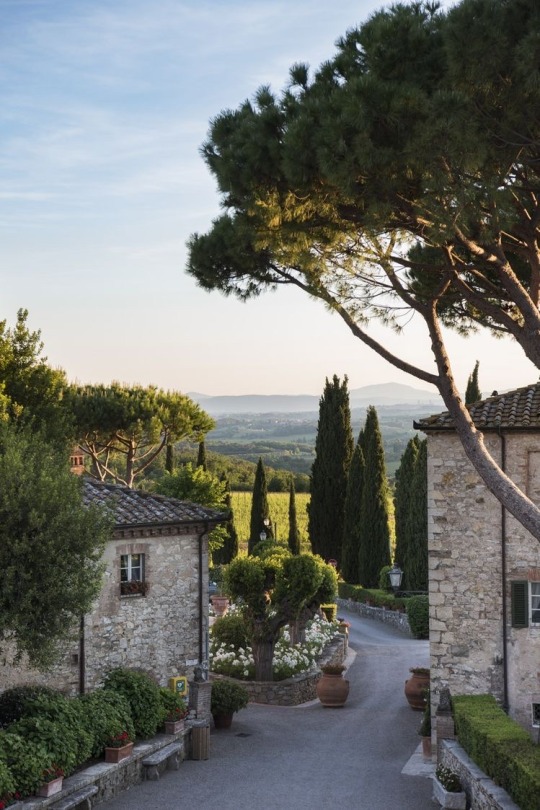
370 notes
·
View notes
Text
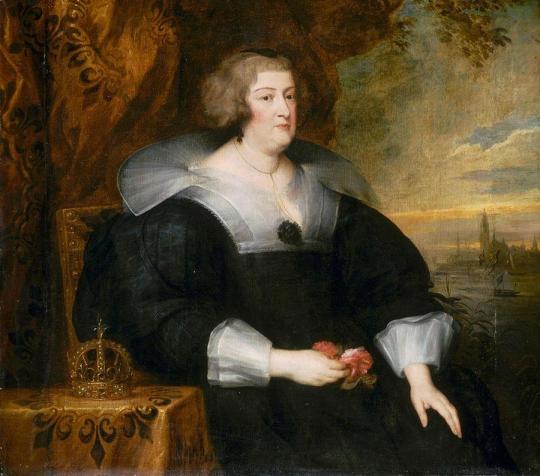
The Exiled Queen Marie de Medici with Coronet Overlooking Cologne
Artist: Anthony van Dyck (Flemish, 1599–1641)
Date: c. 1631
Medium: Oil on canvas
Collection: Palais des Beaux-Arts de Lille, France
Marie de' Medici
Marie de' Medici (French: Marie de Médicis; Italian: Maria de' Medici; 26 April 1575 – 3 July 1642) was Queen of France and Navarre as the second wife of King Henry IV. Marie served as regent of France between 1610 and 1617 during the minority of her son Louis XIII. Her mandate as regent legally expired in 1614, when her son reached the age of majority, but she refused to resign and continued as regent until she was removed by a coup in 1617.
Marie was a member of the powerful House of Medici in the branch of the grand dukes of Tuscany. Her family's wealth inspired Henry IV to choose Marie as his second wife after his divorce from his previous wife, Margaret of Valois. The assassination of her husband in 1610, which occurred the day after her coronation, caused her to act as regent for her son, Louis XIII, until 1614, when he officially attained his legal majority, but as the head of the Conseil du Roi, she retained the power.
Noted for her ceaseless political intrigues at the French court, her extensive artistic patronage and her favourites (the most famous being Concino Concini and Leonora Dori), she ended up being banished from the country by her son and dying in the city of Cologne, in the Holy Roman Empire.
#portrait#marie de' medici#queen of france#seated#costume#crown#table#house of medici#tuscany#cologne#coronet#woman#european#french history#oil painting#anthony van dyck#flemish painter#baroque style#artwork#european art#17th century painting
6 notes
·
View notes
Text

Louise, Crown Princess of Saxony (1870-1947) and her brother Archduke Leopold Ferdinand, Prince of Tuscany (1868–1935). They were the two eldest children of Ferdinand IV, Grand Duke of Tuscany (1835 – 1908) with his second wife Princess Alice of Parma (1849-1935).
#haus habsburg lothringen#archduchess#archduke#austria tuscany#österreich toskana#house of habsburg lorraine#italian aristocracy#granducato di toscana#regno d'italia#pornstache
29 notes
·
View notes